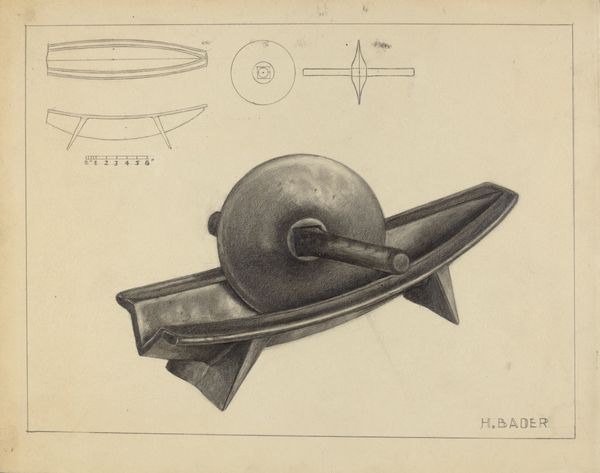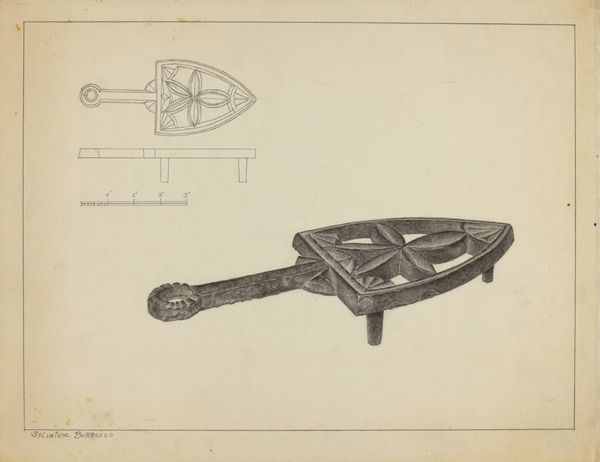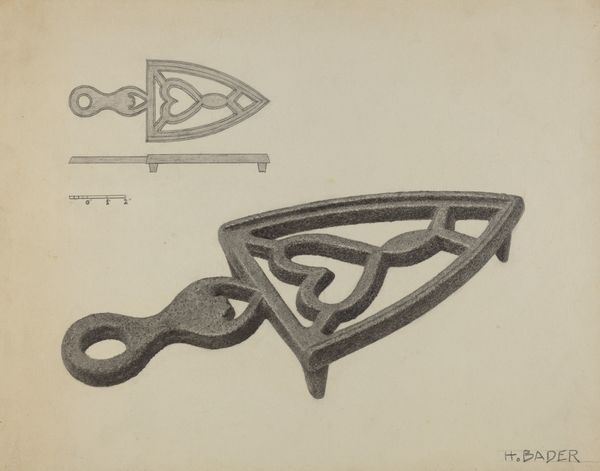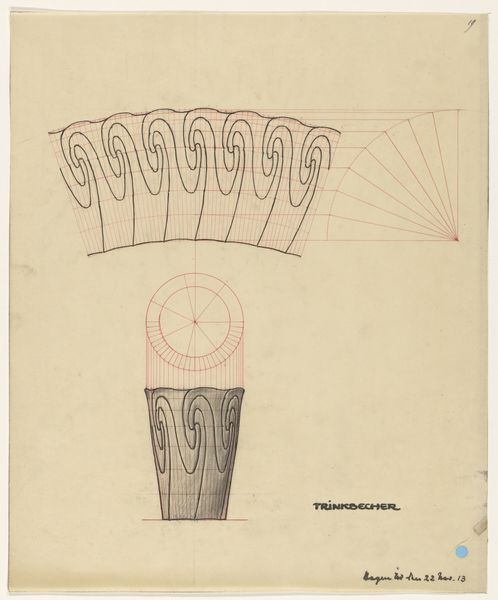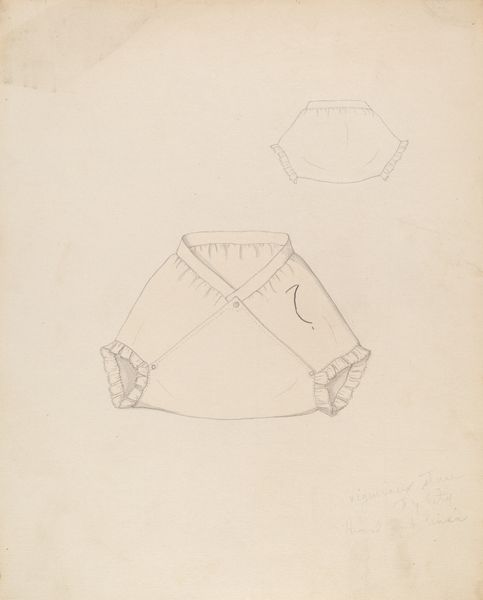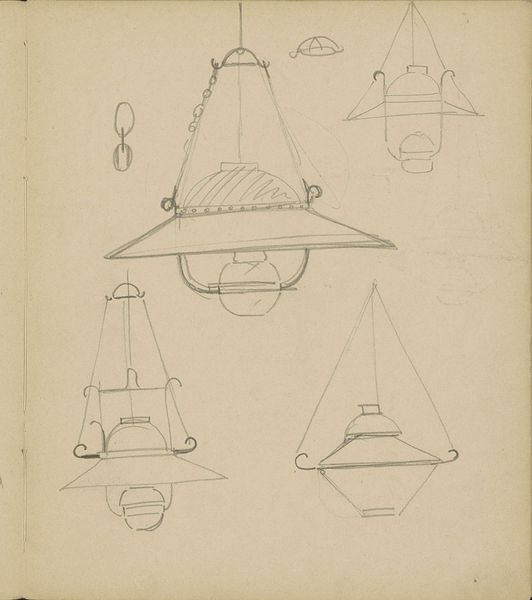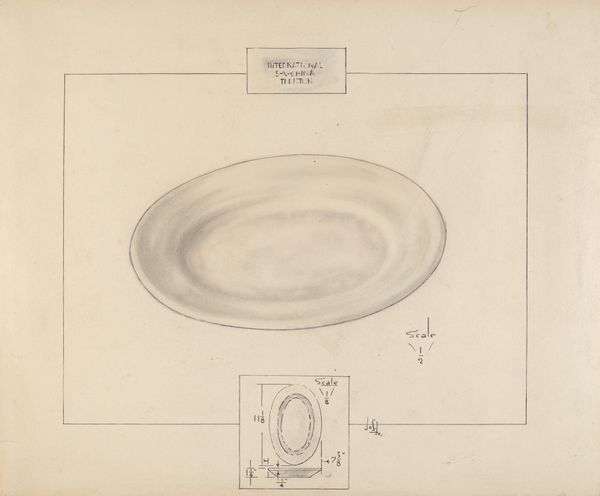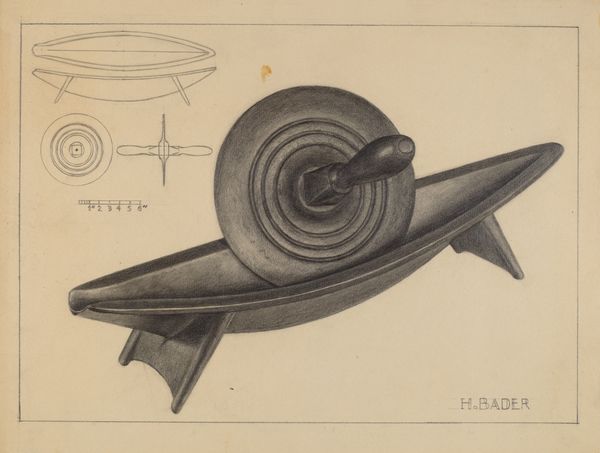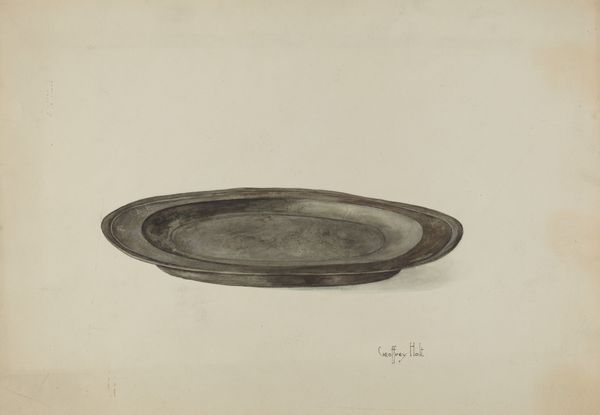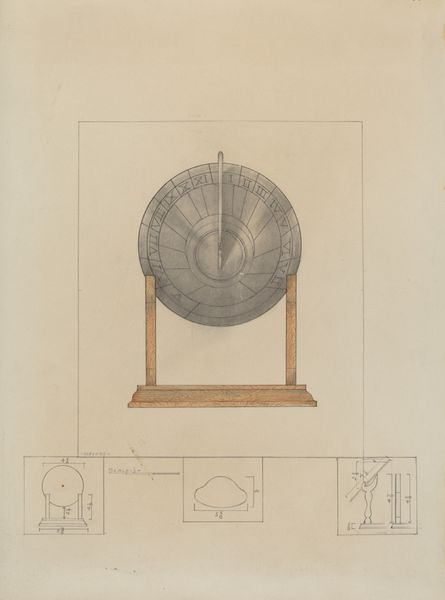
drawing, pencil, graphite
#
pencil drawn
#
drawing
#
aged paper
#
toned paper
#
light pencil work
#
pencil sketch
#
old engraving style
#
personal sketchbook
#
pencil drawing
#
pencil
#
graphite
#
sketchbook drawing
#
pencil work
#
academic-art
#
modernism
Dimensions: overall: 22.6 x 27.5 cm (8 7/8 x 10 13/16 in.)
Copyright: National Gallery of Art: CC0 1.0
Editor: Here we have "Man's Hat," a pencil and graphite drawing on what appears to be aged paper, created by William Mills sometime between 1935 and 1942. I'm struck by the technical nature of the piece; it feels almost like an architectural rendering. What do you see in this work? Curator: This piece brings to mind the intersection of mass production and individuality during the mid-20th century. We see the remnants of the artist’s hand in the medium: the graphite and pencil lines clearly record their movements in creating the artwork. Notice how Mills not only depicts the hat but also includes almost technical schematics around the central image. This process reveals the very construction of a consumer product; we glimpse into the labor needed to shape the materials for manufacturing, whether for factory or artisanal contexts. Editor: So, it's not just about the finished product, but about showing the labor involved in its making? Curator: Exactly. By presenting these schematics, Mills forces us to consider the design, the cutting of material, and the processes involved. Who designed this object? Was it machine-made, or individually crafted? And how does the commodification of "style" impact both the maker and consumer? Editor: That's fascinating. I never would have considered it from that angle. It is like looking at the deconstruction of the manufacturing process itself through art. Curator: Precisely! It moves beyond representation and touches upon the socio-economic structures underpinning everyday objects. I see here that a hat is not only a commodity, it is the condensation of economic and human processes. Editor: I appreciate how this analysis makes you look past the simple appearance of the drawing and think about its material origins and the labor it represents. Curator: Art has an ability to render a commonplace object profound by making its origins and design practices evident and thought provoking.
Comments
No comments
Be the first to comment and join the conversation on the ultimate creative platform.
